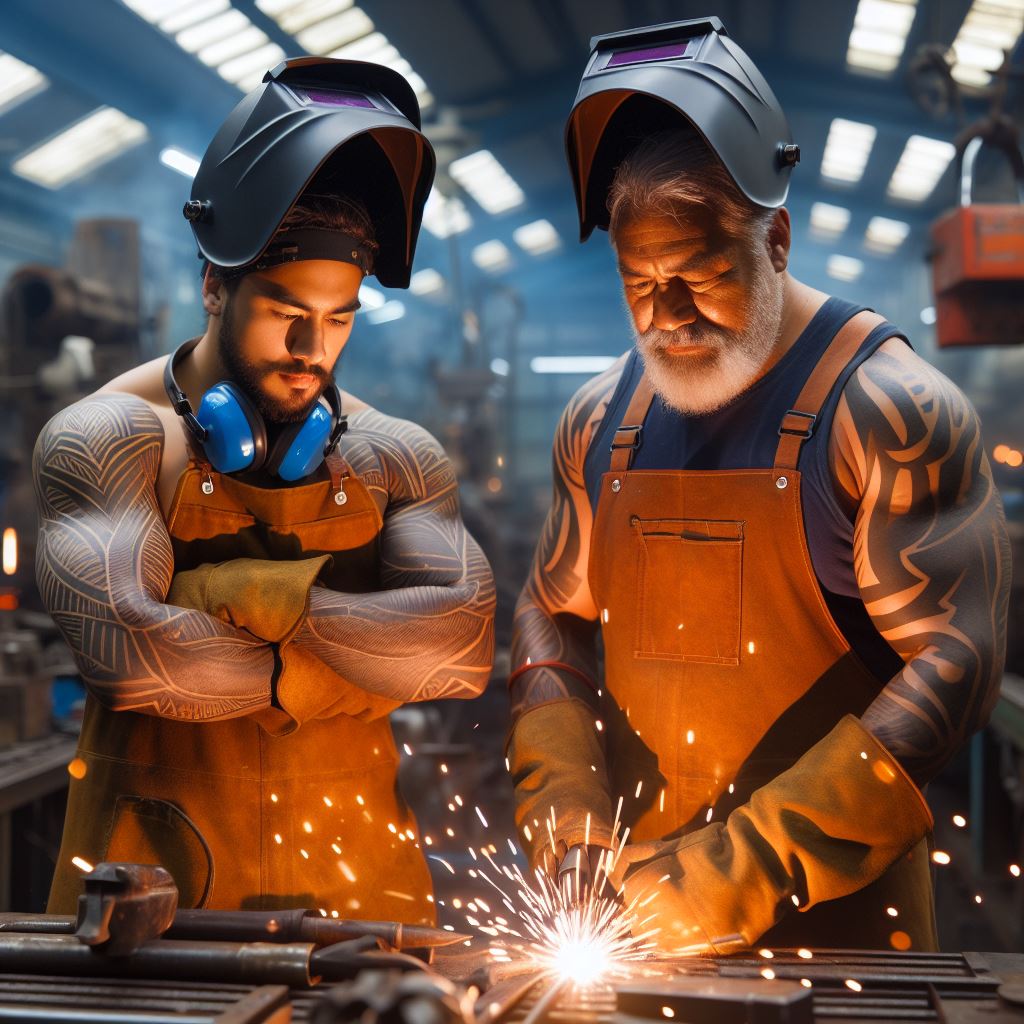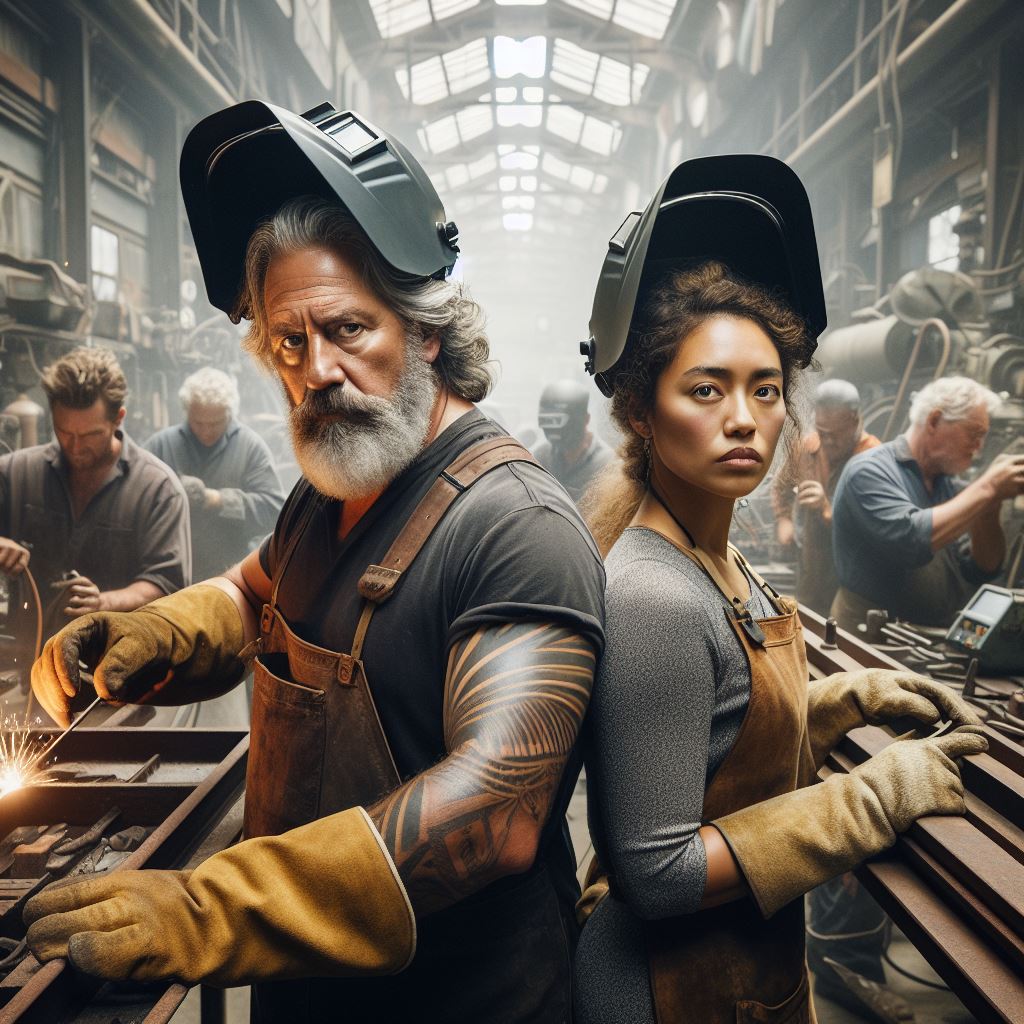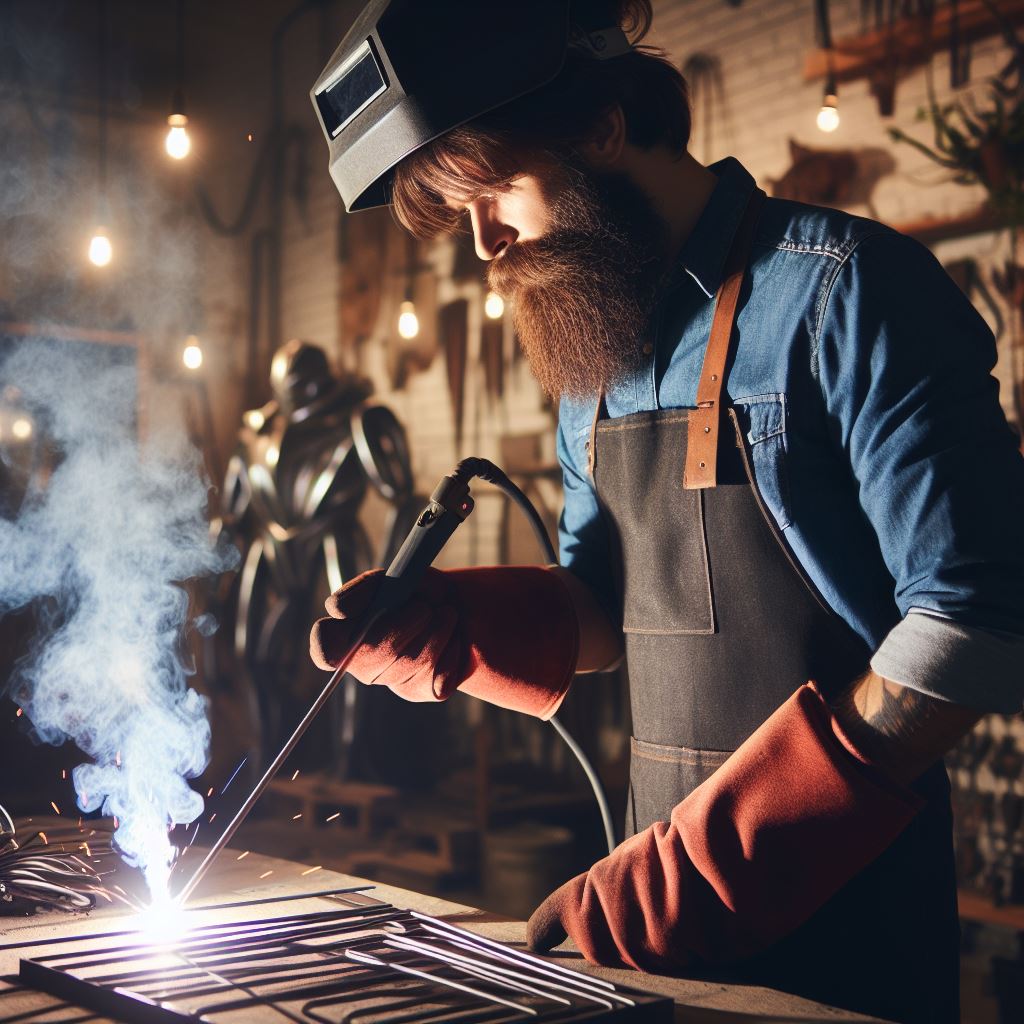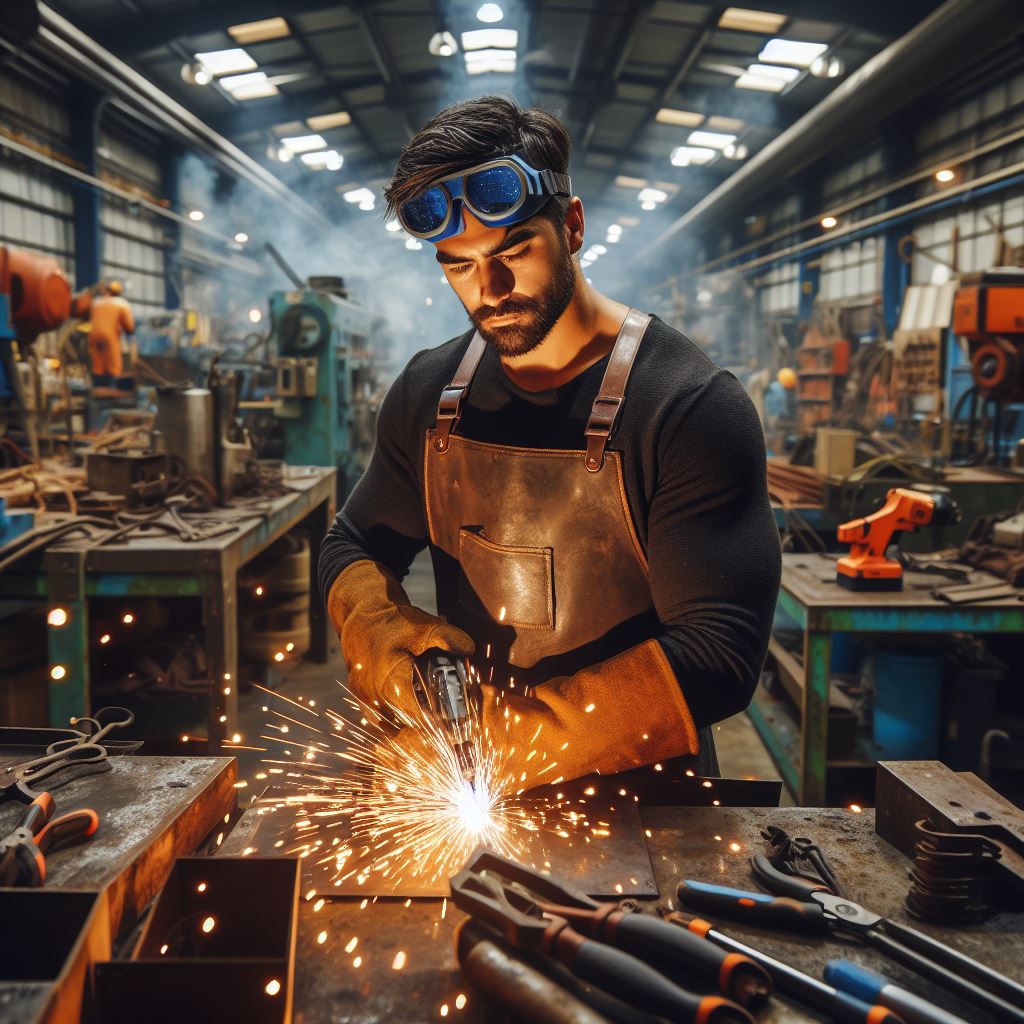Introduction
In New Zealand, women are increasingly breaking into the traditionally male-dominated field of welding. This section explores the rising trend of women in welding in NZ.
Historically, welding has been perceived as a male-centric profession. However, societal norms are shifting, welcoming diversity. Women bring unique perspectives, skills, and contributions to welding.
Their presence enriches the industry and promotes inclusivity. Despite challenges, more women are pursuing careers in welding.
They challenge stereotypes and redefine gender roles in welding. As the demand for skilled welders grows, women are seizing opportunities in welding.
Gender diversity strengthens the welding workforce and fosters innovation. Women in welding inspire future generations of aspiring welders.
This section celebrates the achievements and contributions of women in welding. It highlights their experiences, successes, and challenges in the field.
The journey of women in welding reflects progress towards gender equality. Encouraging more women to enter welding promotes diversity and excellence.
This section aims to inspire and empower women interested in pursuing welding careers. It sheds light on the diverse pathways available in welding for women.
Let’s delve into the growing trend of women in welding in New Zealand.
History of Women in Welding
Historical context of welding as a male-dominated field:
- Welding has traditionally been seen as a profession dominated by men.
- For many years, women were discouraged from entering welding due to societal norms.
- Gender bias and stereotypes created a barrier for women interested in pursuing welding careers.
- Welding was considered a physically demanding job that was thought to be better suited for men.
- The perception that women lacked the strength and skill required for welding persisted for a long time.
Examples of pioneering women in welding
- Despite the challenges, there have been several trailblazing female who paved the way for others in welding.
- One such example is Marion Isabel Rundell, who became the first woman to become a certified welding inspector in New Zealand.
- Another notable figure is Jessi Combs, an American welder, fabricator, and television personality, who broke barriers in the industry.
- These women defied societal expectations and proved that welding was not just for men.
Challenges faced by women in Welding historically
- Gender discrimination and bias in the welding industry limited opportunities for female.
- Many women experienced harassment, lack of support, and unequal treatment in male-dominated workplaces.
- Access to training and educational programs in welding was often limited to men.
- The absence of role models made it difficult for young female to envision themselves in welding careers.
- Women were often underestimated and undervalued, leading to lower wages and limited career advancements.
Despite these challenges, female in welding have made significant strides, breaking stereotypes and achieving success.
Next section: III. Current State of Women in Welding: Opportunities and Progress
Read: Carpenter Apprenticeships in NZ Explained
Current State of Women in Welding in NZ
Statistical data on the percentage of women in welding
In recent years, the number of female pursuing welding careers in New Zealand has steadily increased.
According to the latest statistics, the percentage of female in welding stands at 12%.
This figure demonstrates a significant rise compared to the past, highlighting a growing trend in women’s interest in welding.
Reasons for the growing trend in women pursuing welding careers
One of the primary reasons behind the increasing trend of female in welding is the changing societal norms.
Traditional gender roles are being challenged, empowering women to explore non-traditional career paths.
Moreover, the demand for skilled welders in various industries and sectors has created opportunities for women.
With equal access to education and training, they can now pursue welding as a viable and rewarding profession.
Another factor contributing to the rising trend is the effort of organizations and institutions to promote gender diversity.
By actively encouraging women to consider welding as a career, these entities aim to bridge the gender gap in the industry.
Additionally, advocacy groups and mentorship programs provide support and guidance, eliminating barriers for women in welding.
Success stories of women in welding in NZ
New Zealand is witnessing remarkable success stories of women who have excelled in the welding industry.
One such story is that of Sarah Thompson, who started her welding journey as an apprentice.
Through determination and hard work, she rose to become a highly skilled welder and a source of inspiration for many aspiring women in the field.
Another notable success story is Emma Patel, who defied stereotypes by pursuing a welding career.
With her exceptional skills and dedication, she has not only achieved recognition but also established her own welding business.
Emma’s achievements showcase the immense potential and opportunities available for female in the welding profession.
These success stories highlight the untapped potential of female in welding and showcase the achievements of those breaking barriers.
Such examples serve as motivation for other female to consider welding as a viable career option.
They also demonstrate that gender should never limit one’s aspirations or capabilities in any profession, including welding.
Basically, the current state of women in welding in New Zealand is witnessing a positive shift.
With the percentage of women in welding steadily increasing and success stories of women in the field emerging, the industry is becoming more inclusive.
The growing trend can be attributed to changing societal norms, equal access to education and training, and efforts to promote gender diversity.
As more female embrace welding as a career, the industry will benefit from diverse perspectives and contributions.
Read: NZ Carpentry: Skills and Tools Needed
Benefits of women in the welding industry
Diverse perspectives and problem-solving approaches
- Women bring unique perspectives to the welding industry, offering different ways of thinking and problem-solving.
- Their diverse backgrounds and experiences allow for a broader range of solutions to welding challenges.
- By incorporating these diverse perspectives, the welding industry can benefit from more innovative and effective problem-solving techniques.
Enhanced creativity and innovation in welding techniques
- Women in welding often bring a different approach to traditional welding techniques, encouraging creativity and innovation.
- Their fresh ideas and alternative methods can lead to the development of new welding techniques and practices.
- This fosters growth and improvement within the industry, allowing for advancements in welding technology.
Improved teamwork and communication skills in the workplace
- The presence of female in the welding industry promotes a more inclusive and collaborative work environment.
- Women often excel in teamwork, fostering positive relationships and effective communication among team members.
- Their strong interpersonal skills contribute to a harmonious workplace, where collaboration and effective communication are prioritized.
Ultimately, the inclusion of female in the welding industry brings numerous benefits.
Their diverse perspectives and problem-solving approaches lead to more innovative and effective solutions.
Moreover, their creativity and innovation in welding techniques drive advancements within the industry.
Personalized Career Consulting
Unlock your potential with expert career advice tailored to your goals. Get personalized guidance and actionable steps toward your dream career in New Zealand.
Get StartedFurthermore, the presence of women enhances teamwork and communication skills in the workplace.
By promoting a more inclusive and collaborative environment, the industry as a whole can thrive.
It is crucial for the welding industry to recognize and embrace the value that female bring.
Encouraging more women to join the field and providing equal opportunities will only strengthen the industry.
Furthermore, initiatives and support programs can be implemented to ensure the success and growth of women in the field.
By doing so, the welding industry in New Zealand and beyond can continue to flourish and adapt to the changing times.
Let us celebrate the growing trend of female in welding and the positive impact they have on the industry!
Their contributions not only benefit the industry but also inspire and empower others to pursue their passions.
Together, we can create a more inclusive and diverse welding industry that thrives on the strengths of all its members.
Read: Top Carpentry Courses in New Zealand
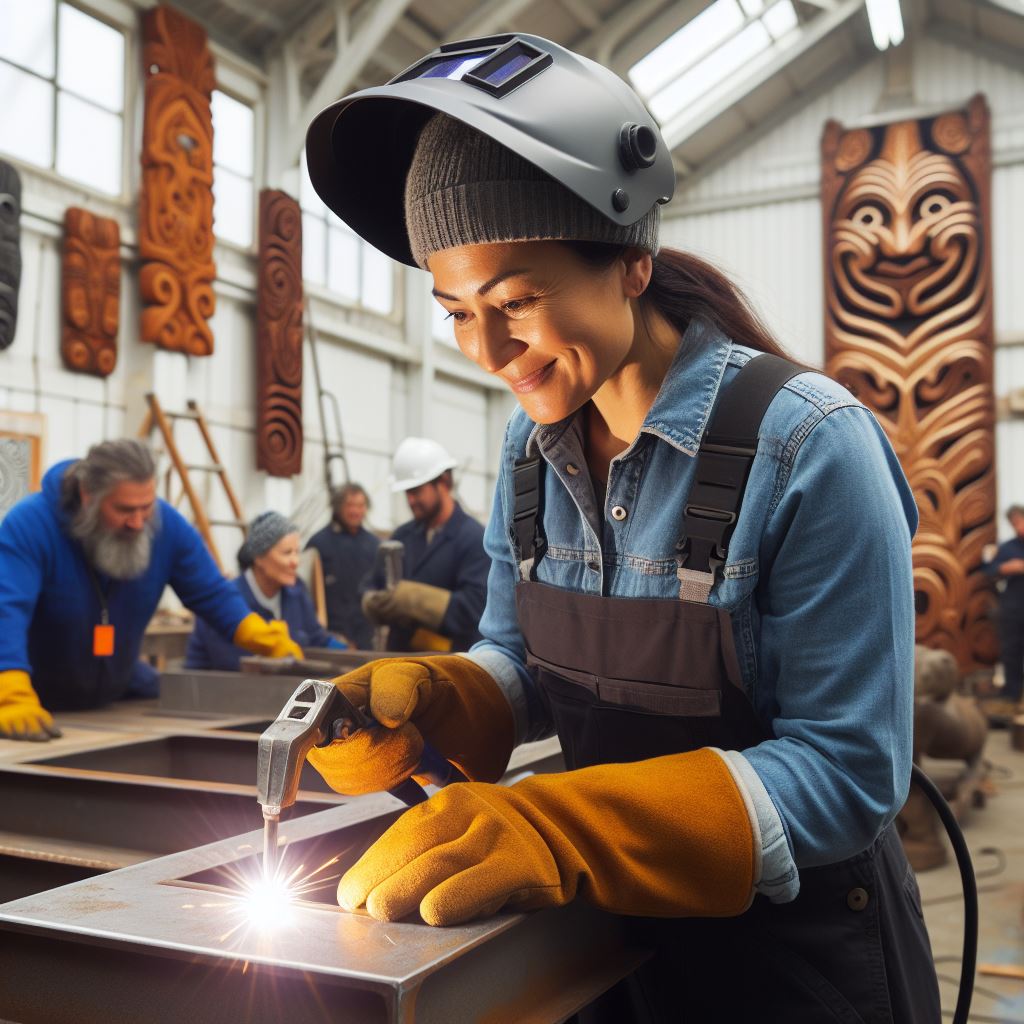
Challenges and Opportunities for Women in Welding
Gender bias and stereotypes in the industry
- Women in welding face stereotypes that they are not as physically capable as men.
- Gender bias in the industry often leads to women being overlooked for job opportunities.
- Women are often subjected to harassment and discrimination in male-dominated workplaces.
- Ingrained beliefs about gender roles prevent female from entering the welding profession.
- These biases and stereotypes create an unfriendly and unwelcoming environment for women.
Supportive initiatives and organizations for women in welding
- Organizations such as Women Who Weld provide female with training and support in the welding industry.
- Supportive initiatives aim to break down gender barriers and provide equal opportunities for women.
- Training programs specifically tailored to female help develop their skills and confidence in welding.
- Mentorship programs connect experienced women welders with those looking to enter the profession.
- These initiatives and organizations create a supportive network for female in welding.
Encouraging more women to consider welding as a career
- Education and outreach programs can introduce young girls to the possibilities of welding as a career.
- Raising awareness about the benefits and opportunities in the welding industry can attract more women.
- Highlighting successful women welders and their achievements can inspire others to join the profession.
- Addressing the misconceptions and common stereotypes surrounding welding can encourage women’s interest.
- Providing scholarships and financial support can make welding education more accessible to female.
Therefore, women face challenges such as gender bias and stereotypes in the welding industry.
However, there are supportive initiatives and organizations working to create equal opportunities for women.
Encouragement through education, awareness, and financial support can help increase the number of female entering the welding profession.
Read: Carpentry 101: A Guide for Kiwi Beginners
Conclusion
Recap of the main points discussed
Throughout this blog section, we explored the growing trend of women in welding in New Zealand.
We discussed various aspects such as the challenges faced by women in this male-dominated industry, the importance of promoting diversity and inclusion.
The initiatives taken by organizations and government to encourage women to pursue welding careers.
Overview of the positive direction for women in welding in NZ
Despite the barriers, the future looks promising for women in welding in NZ. There is a positive shift happening, with more women entering the field and breaking stereotypes.
This trend is not only beneficial for individual women seeking equal opportunities but also for the industry as a whole, as it brings fresh perspectives and talents.
Transform Your Career with a Professional CV and Cover Letter
Stand out to employers with an ATS-optimized resume and tailored cover letter designed to match your dream role. Let us craft your job application materials for success!
Get StartedEncouragement for continued growth and support of women in welding
Our society needs to continue fostering an environment that supports and encourages female in welding.
It starts with promoting education and training opportunities, breaking down stereotypes, and providing mentorship programs.
By doing so, we can ensure that women have equal chances for success and growth in the welding industry.
As we conclude this section, let’s celebrate the progress made and look ahead with hope and determination.
Let’s continue to support and uplift female in welding, recognizing their valuable contributions and creating a more inclusive and diverse workforce.
Together, we can forge a brighter future for female in welding in New Zealand.

